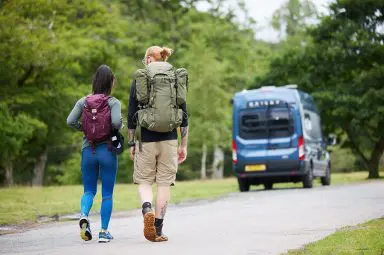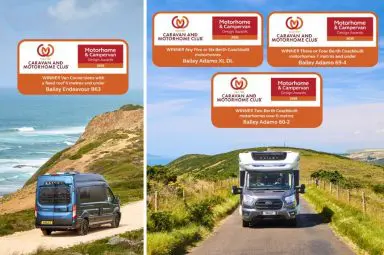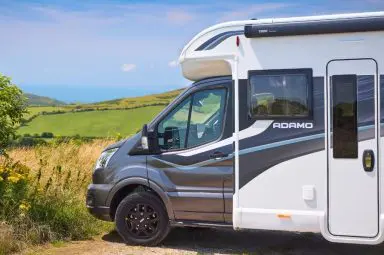Where to take your campervan through the year
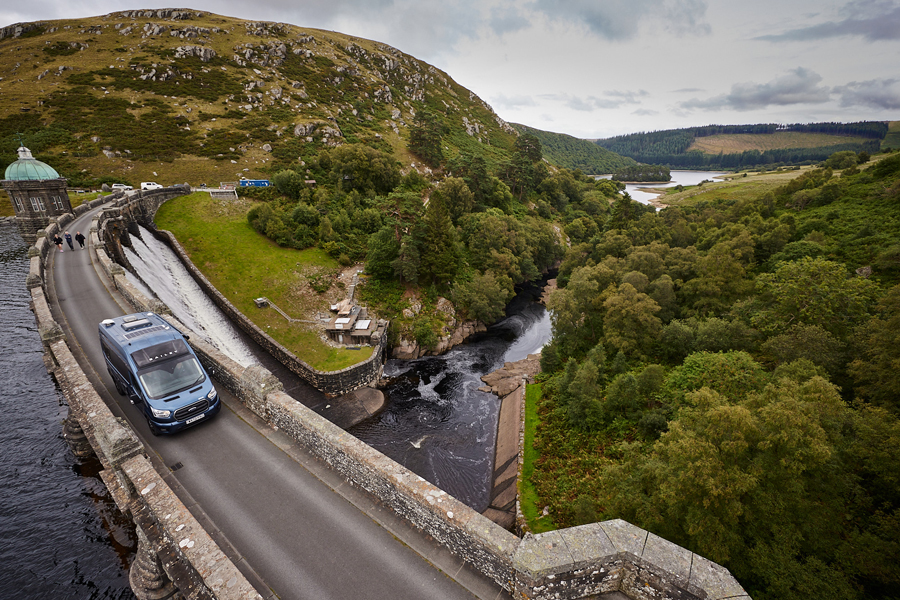
What are the pros of campervanning in each season?
Campervanning is a fantastic way to explore the UK and enjoy the beauty of the outdoors all year round. Here’s a quick rundown of the benefits of campervanning in each season:
Spring (March – May)
- Pleasant weather: Spring offers mild temperatures and beautiful blooms, making it perfect for scenic drives and outdoor activities.
- Fewer crowds: Compared to peak summer, campsites are less crowded, allowing for a more peaceful experience.
- Wildlife spotting: Spring is a great time for wildlife watching, with many animals giving birth to young during this time.
Summer (June – August)
- Long daylight hours: Longer days provide more time for exploring and enjoying outdoor activities like hiking, swimming, and cycling.
- Warm weather: Enjoy the sunshine and balmy evenings at the beach or relax by a campfire.
- Festivals and events: Summer is packed with festivals, fairs, and open-air events, adding to the vibrant atmosphere.
Autumn (September – November)
- Stunning scenery: Autumn brings vibrant foliage, transforming the landscapes into a photographer’s paradise.
- Milder weather: The weather is still mild enough for outdoor activities but with fewer crowds compared to summer.
- Cosy evenings: Cooler evenings make for cosy nights spent inside the campervan, enjoying a warm drink and watching the sunset.
Winter (December – February)
- Festive atmosphere: Experience the magic of winter in the UK with Christmas markets and festive cheer in many towns and villages.
- Unique experiences: Winter offers opportunities for activities like outdoor sports and enjoying the tranquillity of frosty landscapes.
- Lower prices: Campervan rentals and campsite fees are often lower during the winter season.
Seasonal Travels: Where to take your campervan throughout the year in the UK
Click on the links below to go to the beginning of the section for each country:
.
England in Spring (March – May)
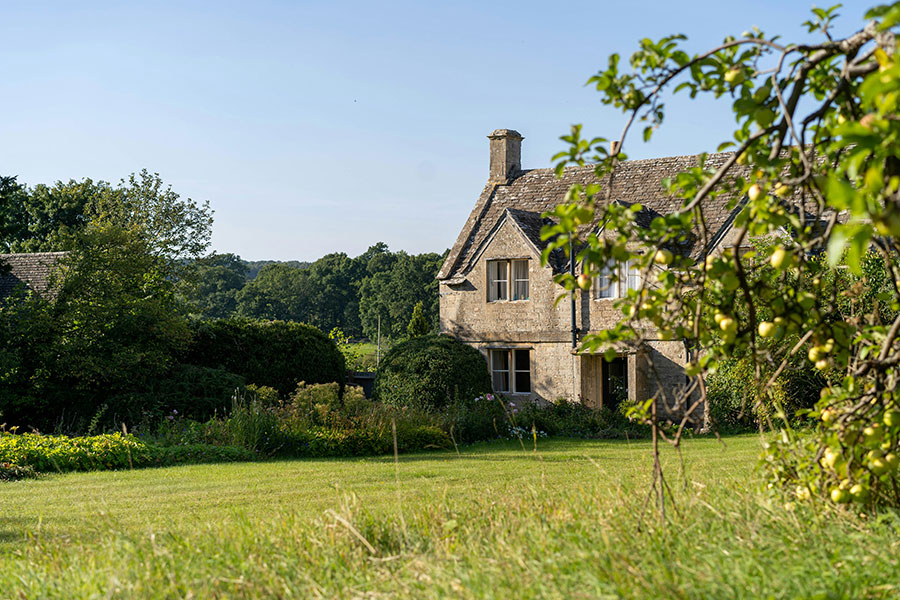
- The Cotswolds: This charming region boasts stunning landscapes of rolling hills, honey-coloured villages, and beautiful gardens that come alive in spring. Explore the Cotswold Way, a scenic walking trail, or visit historical sites like Blenheim Palace.
- Northumberland Coast: Escape the crowds and enjoy the fresh spring air along the dramatic Northumberland Coast. Explore castles like Bamburgh Castle, go birdwatching at RSPB Seahouses, or simply relax on a secluded beach.
England in Summer (June – August)
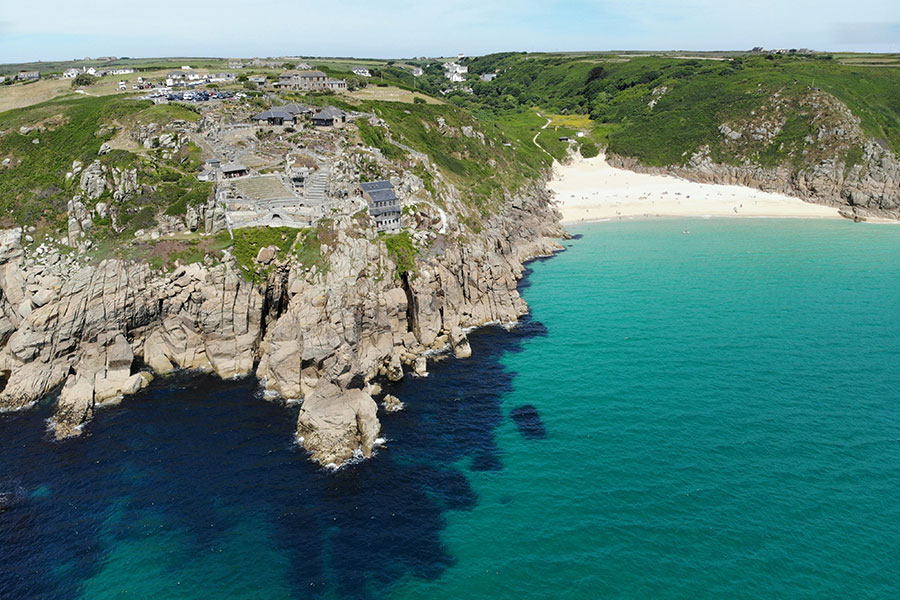
- Lake District: Hike through stunning scenery, explore idyllic lakes like Windermere, or take a scenic boat trip. As this is a popular area, be sure to book campsites well in advance.
- Cornwall: Enjoy miles of South West coastline with sandy beaches, charming fishing villages, and world-class surfing. Explore Land’s End, St Ives, or the Lizard Peninsula.
England in Autumn (September – November)
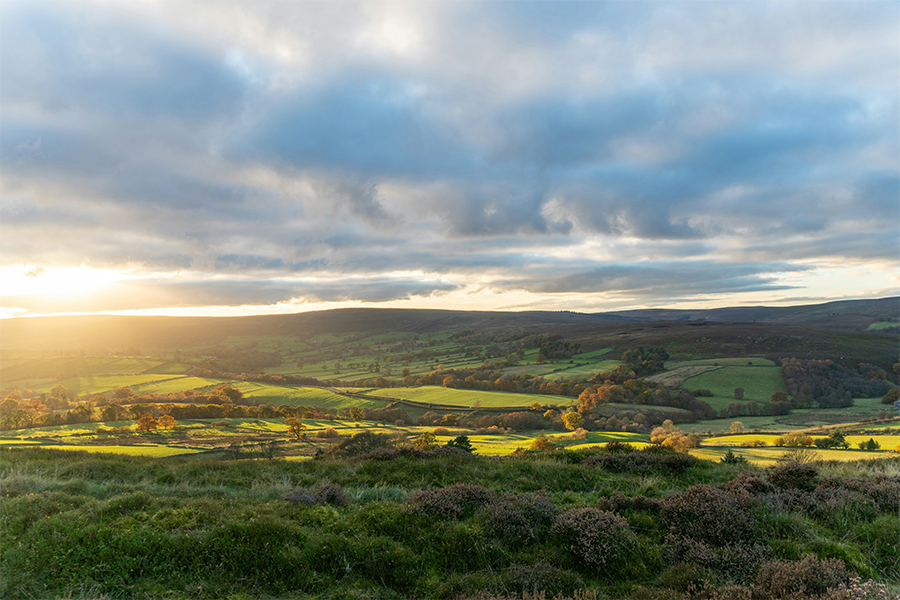
- Yorkshire Dales: Witness the vibrant autumn foliage transform the rolling hills and valleys of the Yorkshire Dales. Hike through the Dales National Park, visit historical sites like Skipton Castle, or sample local cheeses in a traditional pub.
- Peak District: Explore charming villages, hike through the Peak District National Park, or visit Chatsworth House, a magnificent stately home. The cooler temperatures make for pleasant outdoor activities.
England in Winter (December – February)
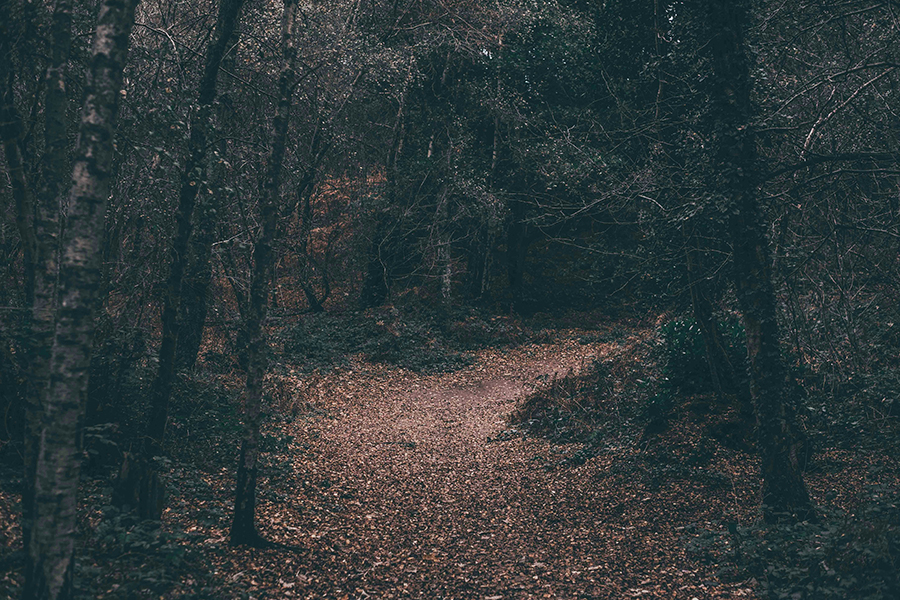
- South Downs National Park: Experience the tranquillity of the South Downs in winter. Hike along the chalk ridgeway, visit historic sites like Arundel Castle, or cosy up in a pub by a roaring fire.
- North York Moors National Park: Embrace the winter wonderland scenery of the North York Moors. Enjoy a festive atmosphere in towns like Whitby, go for a wintery walk on the moors (with proper gear!), or visit historical sites like Rievaulx Abbey.
.
Wales in Spring (March – May)
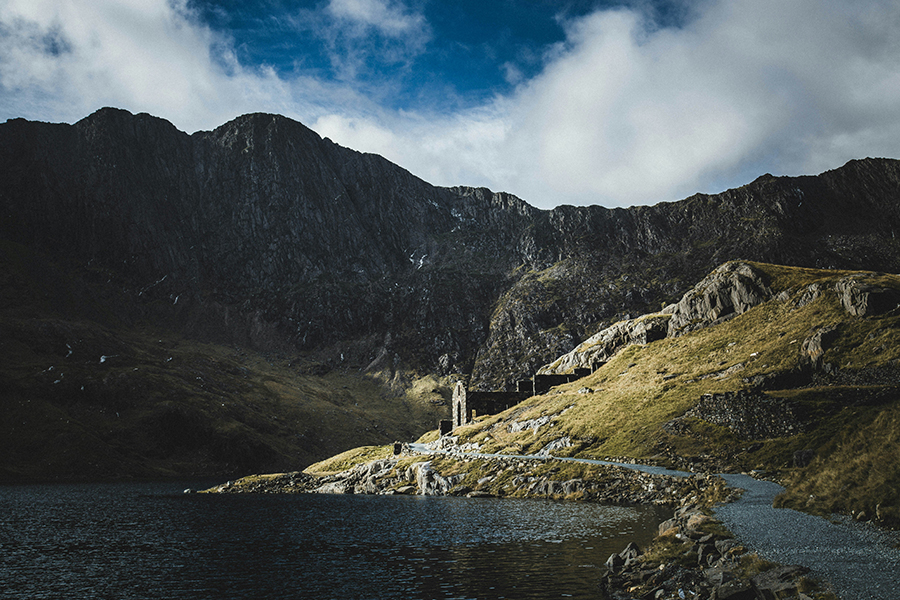
- Snowdonia National Park: Spring is a great time to visit Snowdonia before the summer crowds arrive. Hike majestic mountains like Snowdon (weather permitting), explore charming villages like Betws-y-Coed, or visit historic castles like Caernarfon Castle.
- Pembrokeshire Coast National Park: Escape the crowds and enjoy the fresh spring air along the dramatic Pembrokeshire Coast. Explore hidden coves, go wildlife watching for dolphins and seals, or walk a section of the Pembrokeshire Coast Path, a national trail.
Wales in Summer (June – August)
- Brecon Beacons National Park: Hike through stunning scenery, explore waterfalls like Sgwd yr Erawan, or visit historical sites like Brecon Cathedral. Be sure to book campsites well in advance as this is a popular area, especially during peak season.
- Anglesey: Explore the Isle of Anglesey, known for its beautiful beaches, dramatic coastline, and historical sites like Beaumaris Castle. Enjoy watersports like kayaking or paddleboarding, or simply relax on a sandy beach.
Autumn in Wales (September – November)
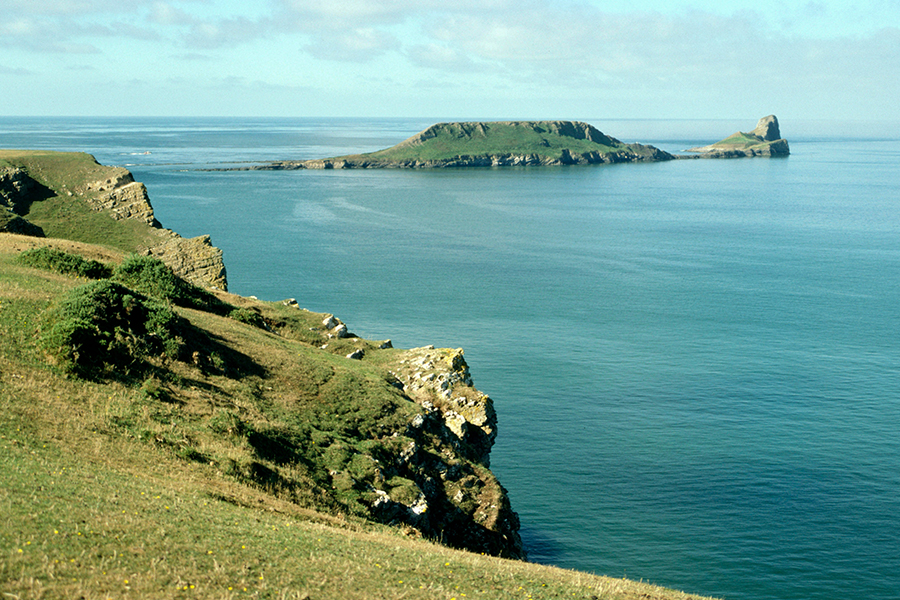
- Elan Valley: Witness the vibrant autumn foliage transform the rolling hills and valleys of the Elan Valley. Hike or bike through the scenic countryside, visit Elan Valley dams and reservoirs or go stargazing at night under clear skies.
- Gower Peninsula: Explore the Area of Outstanding Natural Beauty on the Gower Peninsula. Hike along dramatic cliffs, visit charming villages like Portmeirion or enjoy surfing at some of the best beaches in Wales.
Wales in Winter (December – February)
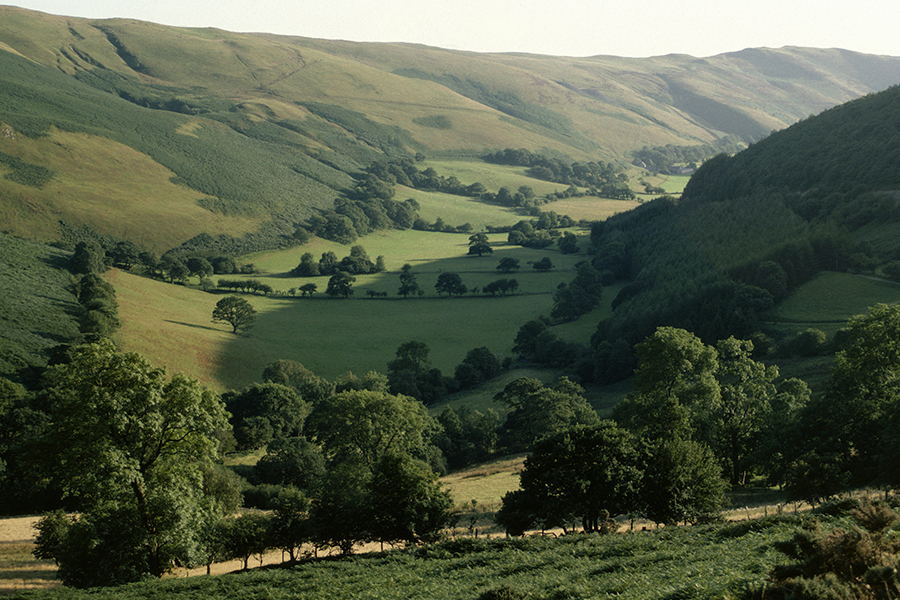
- The Cambrian Mountains: Experience the tranquillity of the Cambrian Mountains in winter. Hike along snowy trails (with the proper gear!), visit historical sites like Powis Castle, or cosy up in a pub by a roaring fire.
- Brecon Beacons National Park: While some high-altitude areas may be inaccessible due to snow, the Brecon Beacons National Park offers a winter wonderland experience in the lower areas. Enjoy a festive atmosphere in towns like Brecon, go for a wintery walk (with proper gear!), or visit historical sites like the National Showcaves Centre for Wales.
.
Northern Ireland in Spring (March – May)
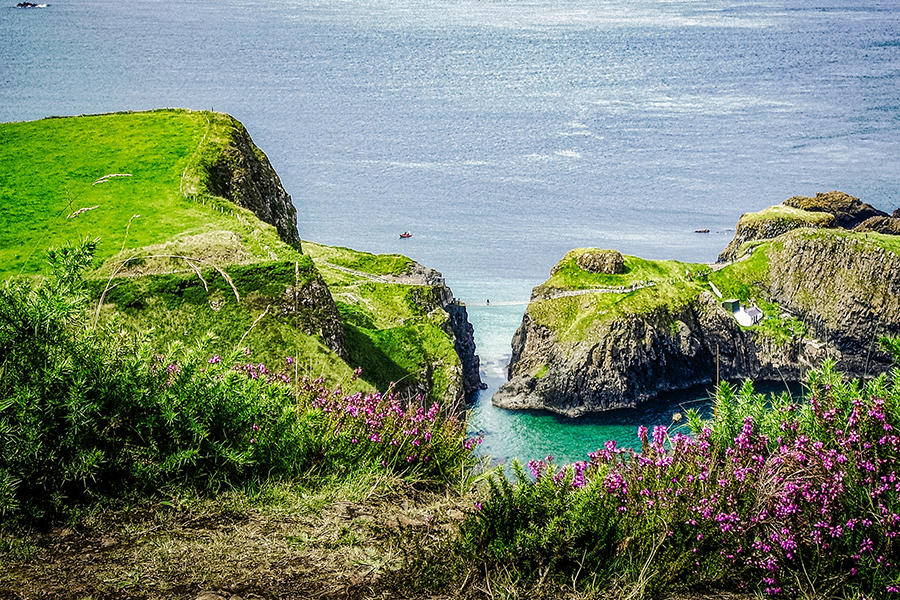
- Causeway Coastal Route: Embark on a scenic drive along the Causeway Coastal Route, a designated Area of Outstanding Natural Beauty. Explore the world-famous Giant’s Causeway, a UNESCO World Heritage Site, visit the charming village of Portrush, or take a boat trip to see puffins on Rathlin Island.
- Glens of Antrim: Explore the Glens of Antrim, an area of outstanding natural beauty with waterfalls, rugged cliffs, and charming villages. Hike through the glens, visit Glenariff Forest Park, or see the cascading waterfall at Glenariff Forest Park.
Northern Ireland in Summer (June – August)
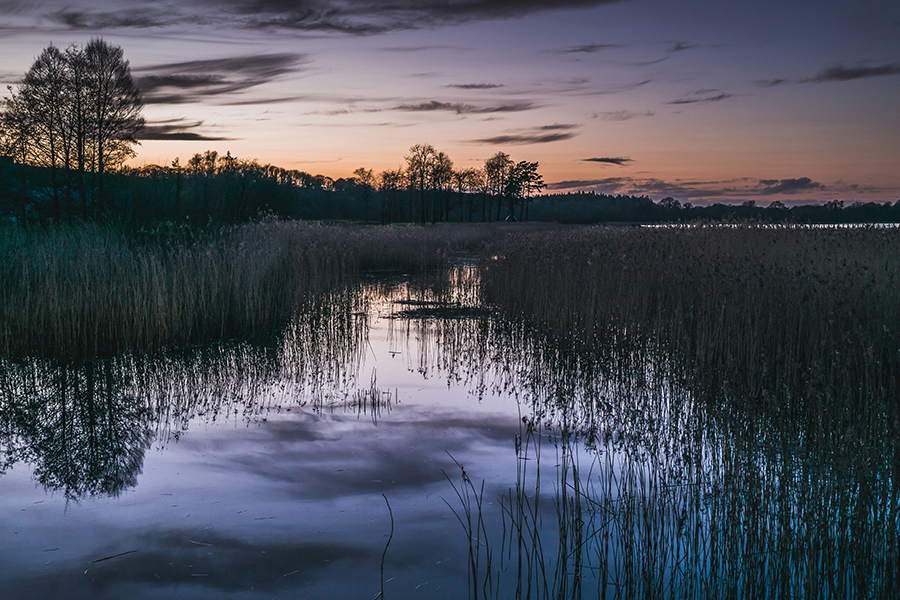
- Mourne Mountains: Explore the dramatic Mourne Mountains, often referred to as the “Granite Alps of Ireland”. Hike the highest peak, Slieve Donard, enjoy scenic drives through the mountains or visit the charming village of Rostrevor.
- Fermanagh Lakelands: Enjoy a relaxing getaway in the Fermanagh Lakelands, a network of interconnected lakes and waterways. Explore Upper and Lower Lough Erne by boat, visit historical sites like Enniskillen Castle, or go for a scenic hike.
Northern Ireland in Autumn (September – November)
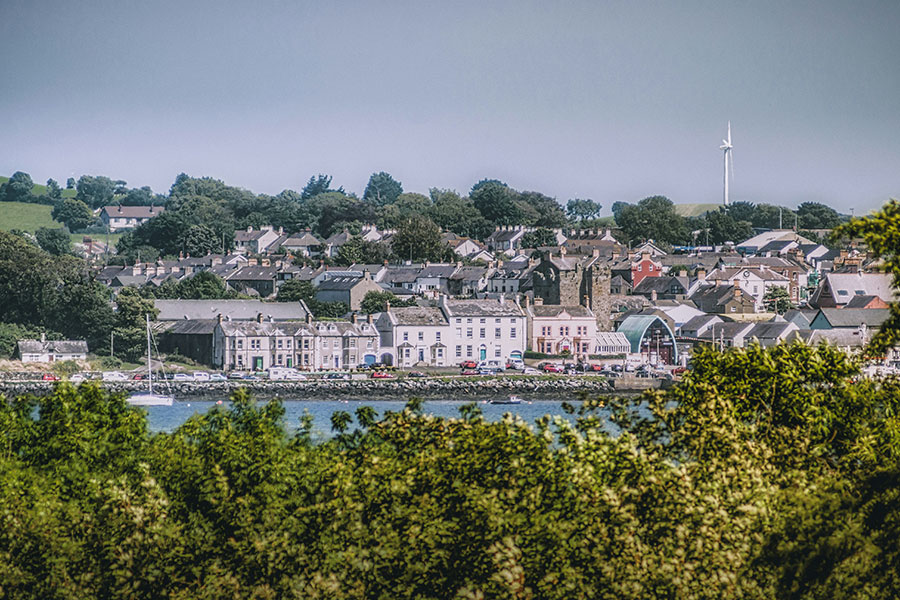
- Sperrins National Park: Witness the vibrant autumn foliage transform the rolling hills and valleys of Sperrins National Park. Hike through the scenic countryside, visit historical sites like Beaghmore Stone Circles, or go stargazing at night under clear skies.
- Ards Peninsula: Explore the Ards Peninsula, an Area of Outstanding Natural Beauty with a dramatic coastline, sandy beaches, and charming villages. Visit Strangford Lough, a designated Area of Outstanding Natural Beauty, go for a hike along the scenic trails, or enjoy a seafood feast in a local pub.
Northern Ireland in Winter (December – February)
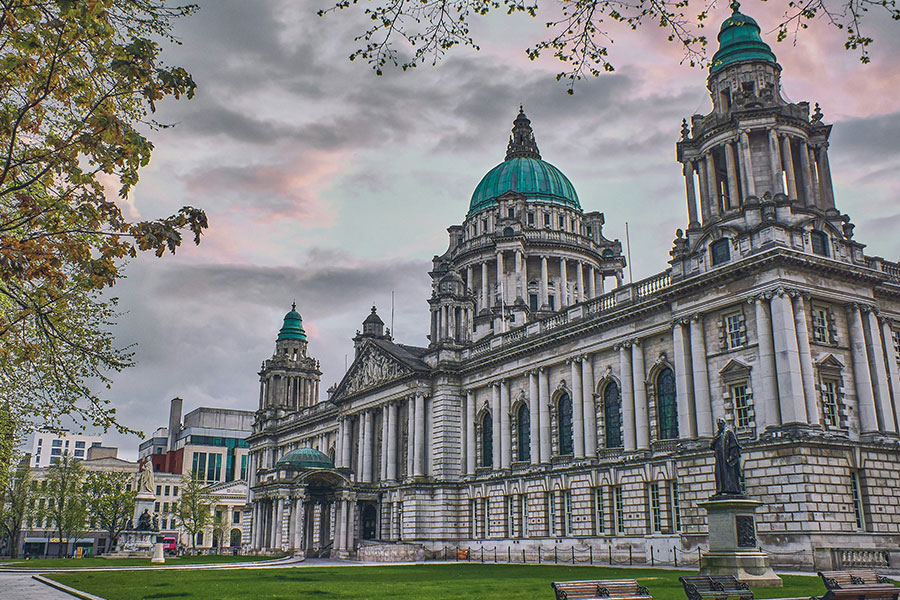
- North Coast: Experience the dramatic beauty of the North Coast in winter. Visit the Giant’s Causeway against a stormy backdrop, explore the Mussenden Temple perched on a clifftop, or take a walk on a secluded beach and enjoy the fresh winter air.
- Belfast: Escape the cold and explore the vibrant city of Belfast. Visit the Titanic Belfast museum, explore the historic city centre, or soak up the festive atmosphere at the Belfast Christmas Market.
.
Scotland in Spring (March – May)
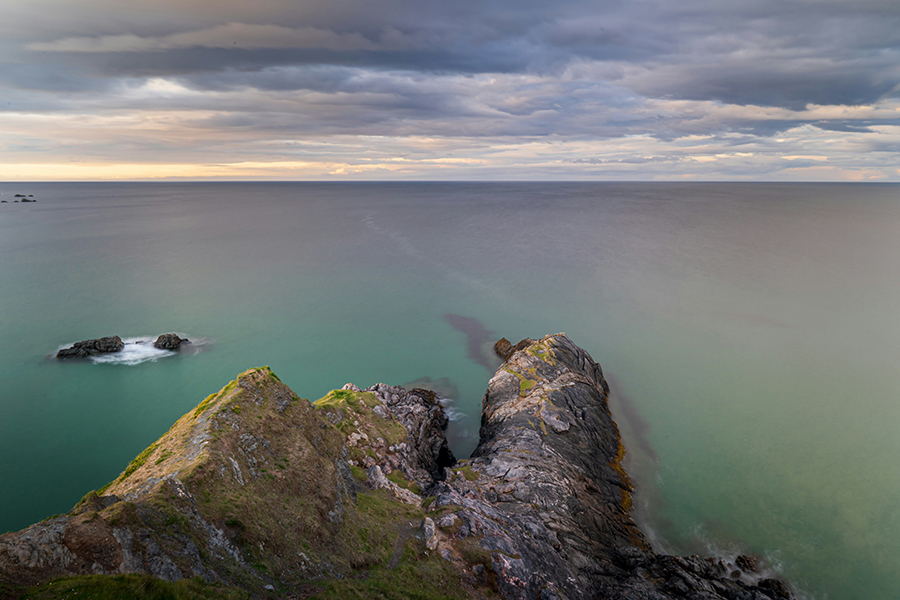
- North Coast 500: Embark on a scenic road trip along the North Coast 500, a route known as Scotland’s answer to Route 66. Explore the dramatic coastline and charming villages like Duncansby Head and Dornoch, and spot wildlife like dolphins and puffins.
- Cairngorms National Park: Explore the Cairngorms National Park, the largest national park in the UK. Hike through the mountains, visit historical sites like Balmoral Castle, the Royal Family’s summer residence, or go for a scenic bike ride.
Scotland in Summer (June – August)
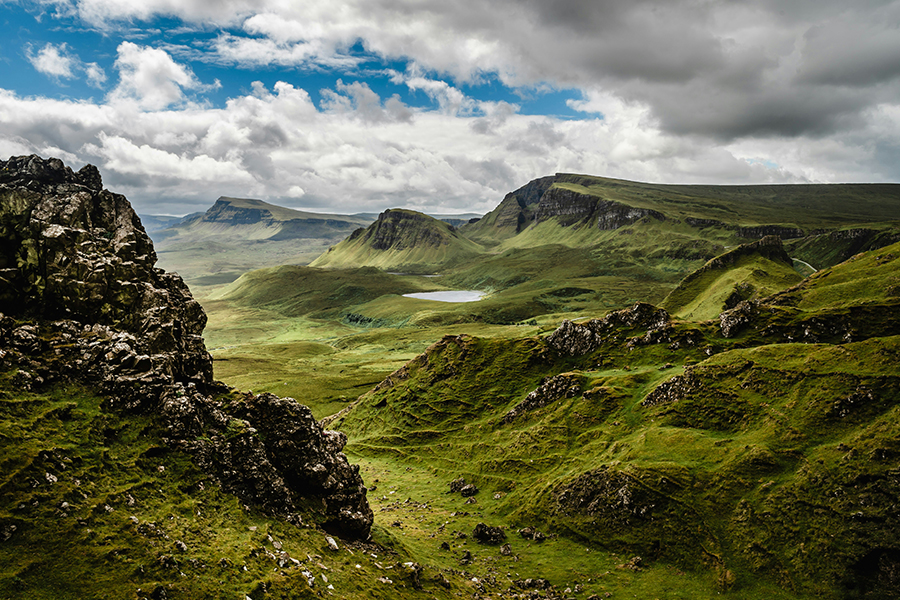
- Isle of Skye: Explore the Isle of Skye, the largest island in the Inner Hebrides, known for its stunning scenery, including the dramatic cliffs of The Quiraing and the iconic Old Man of Storr rock formation. Hike through the rugged landscapes, visit the colourful village of Portree, or take a boat trip to see wildlife like seals and whales.
- Loch Lomond and The Trossachs National Park: Enjoy a relaxing getaway in Loch Lomond and The Trossachs National Park, a scenic region with a network of lochs, forests, and mountains. Hike or bike through the park, visit historical sites like Doune Castle or take a boat trip on Loch Lomond, the largest loch in the UK by surface area.
Scotland in Autumn (September – November)
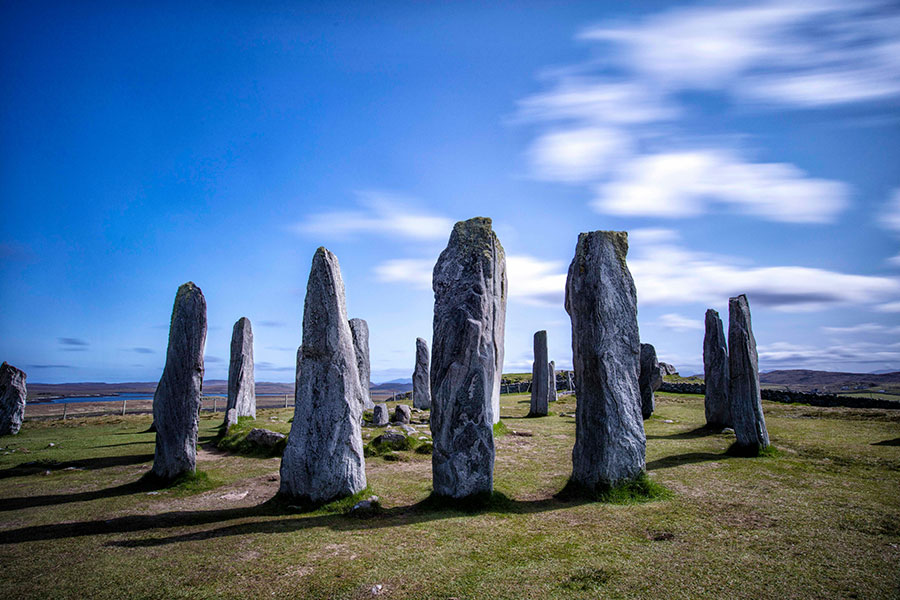
- Scottish Borders: Witness the vibrant autumn foliage transform the rolling hills and valleys of the Scottish Borders. Hike through the scenic countryside, visit historical sites like Melrose Abbey, or go for a relaxing drive and enjoy the fall colours.
- Western Isles: Explore the Western Isles, a chain of islands off the west coast of Scotland, known for their Gaelic culture, stunning scenery, and historical sites. Visit the Isle of Lewis and Harris, the largest island in the Outer Hebrides, explore the Callanish Stones, a prehistoric stone circle, or go for a hike on the Isle of Barra, known for its beautiful beaches.
Scotland in Winter (December – February)
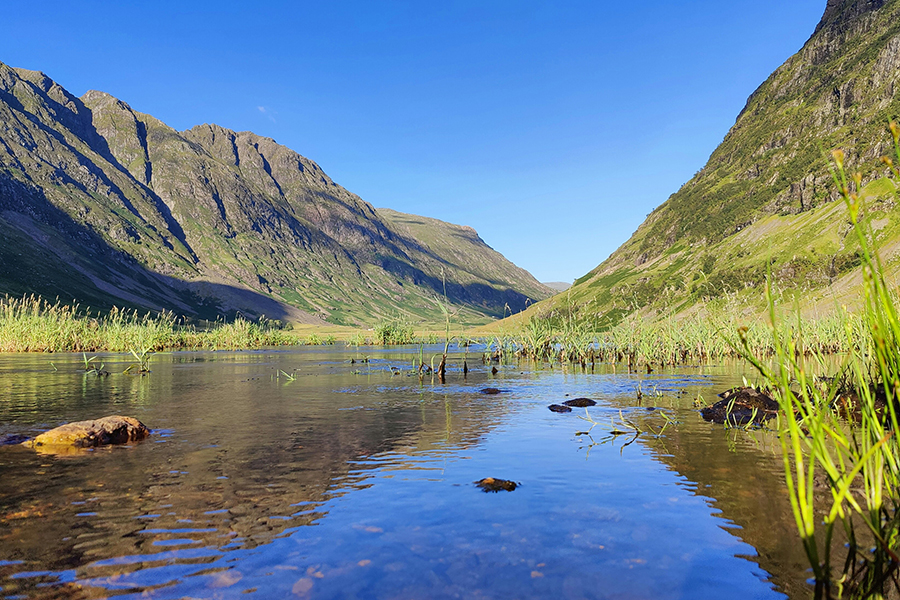
- Highlands: Experience the dramatic beauty of the Highlands in winter. Visit Glencoe, a dramatic mountain pass known as the “murder capital of Scotland” due to its history of clan battles, explore the snowy landscapes on a guided snowshoe tour, or cosy up in a pub by a roaring fire.
- Edinburgh: Escape the cold and explore the vibrant city of Edinburgh. Visit Edinburgh Castle, explore the historic city centre, or soak up the festive atmosphere at the Edinburgh Christmas Markets.
10 Top Tips for considering your travelling season
1. Consider the weather: This is a big one, as the weather can really influence how your holiday plays out.
In general, the summer months (June-August) are the most popular time for campervanning, but they can also be the most crowded and expensive.
Spring (March-May) and autumn (September-November) offer pleasant weather and fewer crowds, while winter (December-February) can be a great time to visit if you’re prepared for the cold weather and potential road closures.
2. Think about what you want to do: Are you interested in spending most of your time outdoors hiking and exploring, or do you prefer a more relaxed pace with time for sightseeing and relaxing at the campsite? This will help you determine the best time of year to go and the best destinations.
3. Consider crowds: If you prefer to avoid crowds, avoid the peak season (summer) and opt for the shoulder seasons (spring and autumn). However, keep in mind that some campsites and facilities may have limited hours or be closed altogether during parts of the spring and autumn.
4. Think about prices: Campervan rentals and campsite fees are typically the most expensive during peak season. You can find better offers on rentals and campsites if you travel outside of peak season.
5. Plan your route: Once you’ve decided on a time of year to travel, you can start planning your route. Be sure to factor in the weather conditions, as well as the opening and closing dates of campsites and other facilities.
6. Book campsites in advance: This is especially important if you’re travelling during peak season. Popular campsites can book up quickly, so it’s best to see if you can reserve your spot well in advance.
7. Pack for the weather: Be sure to pack clothes and gear that are appropriate for the time of year you’ll be travelling. Remember to pack rain gear, even if you’re travelling during the summer months.
8. Be prepared for anything: It’s always a good idea to pack a first-aid kit, some basic tools, and a spare tyre. Also, pack some extra food and water in case of any potential delays.
9. Relax and enjoy the ride! Campervanning is a great way to see the country and experience the outdoors. Don’t get bogged down in the details; just relax and enjoy the ride.
10. Leave no trace: When you’re camping, it’s important to leave no trace. Take all your rubbish with you and be mindful of the environment.
What campervan is best for all-season touring?
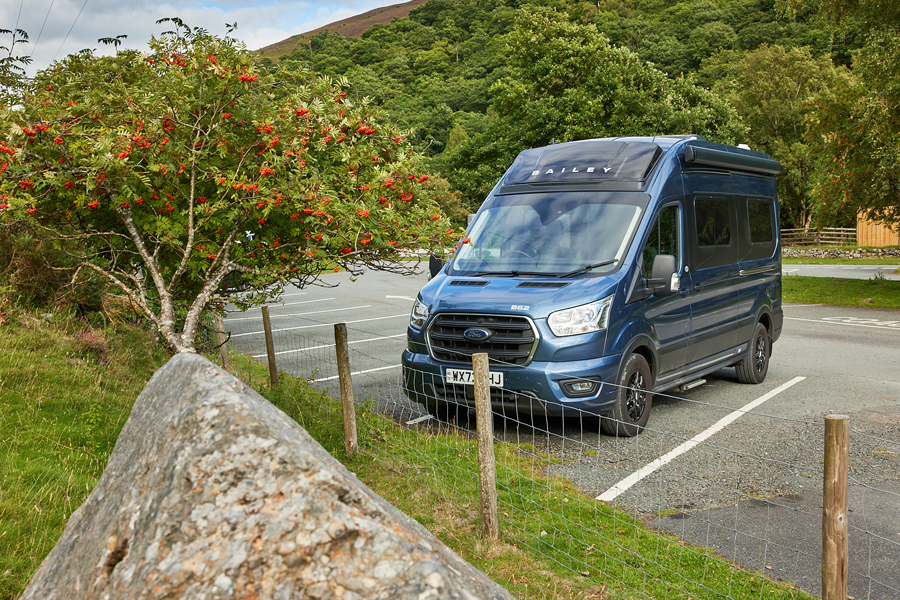
The Bailey Endeavour is perfect for all-season touring due to its robust four-season heating system, ensuring comfort in any climate.
The well-insulated structure keeps the interior cosy during winter and cool in summer. Its durable construction withstands various weather conditions, while the Thule automatic slide-out step and adaptable interior provide convenience and flexibility.
Whether you’re navigating snowy mountains or sunny beaches, the Bailey Endeavour’s features ensure a comfortable and enjoyable experience for you, your family and your pets year-round.
Latest news & events
See all news & eventsWinchester Caravans & Motorhomes Caravan, Motorhome and Awning Spring Spectacular
COLDEN COMMON, MAIN ROAD, WINCHESTER
Stowford Leisure (Devon) Spring Open Weekend & Awning Show
STOWFORD LEISURE (DEVON), A361 WEST DOWN, ILFRACOMBE, DEVON
Grantham's Midlands Caravan & Motorhome Season Ready Show
SPITTLEGATE LEVEL
GRANTHAM
